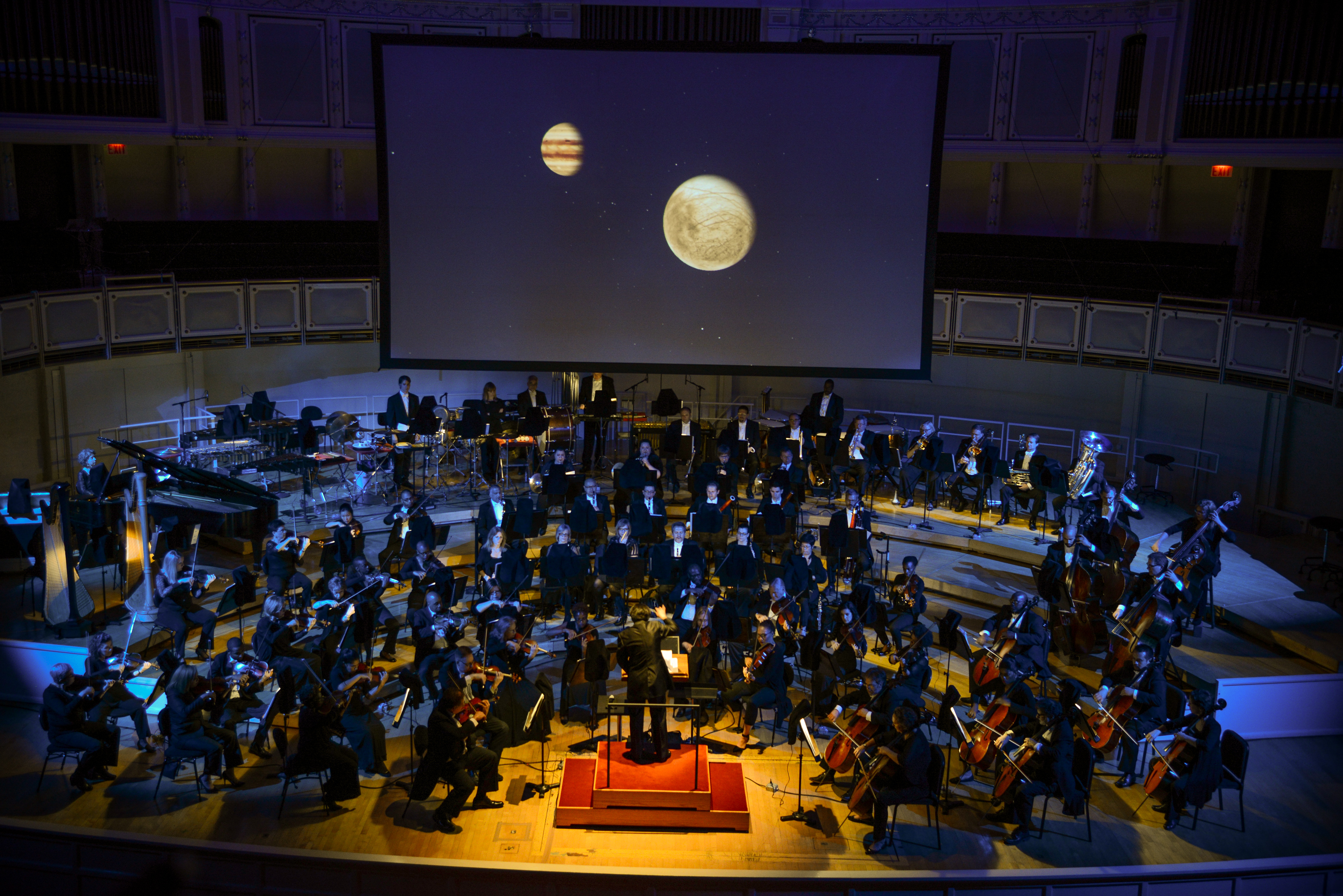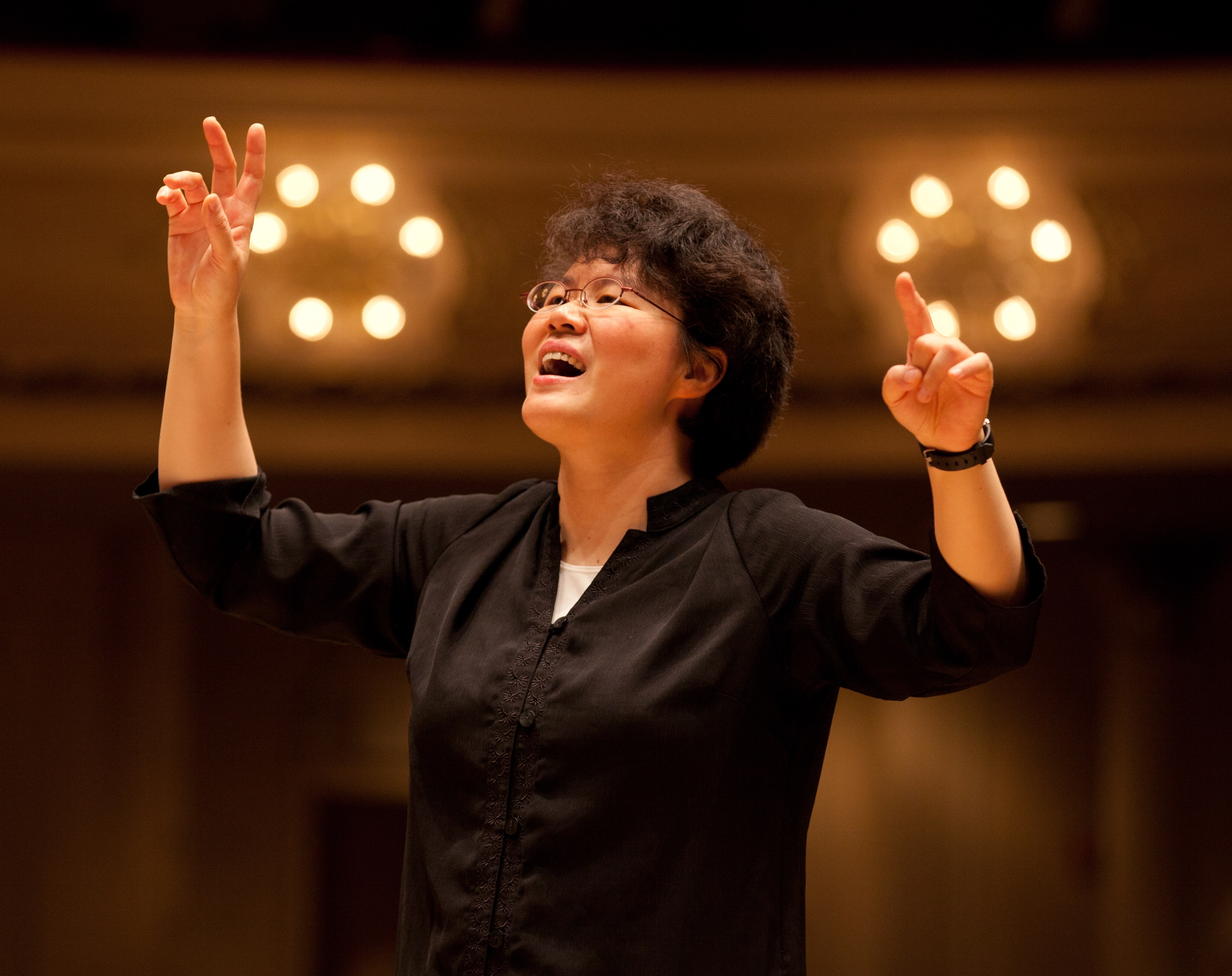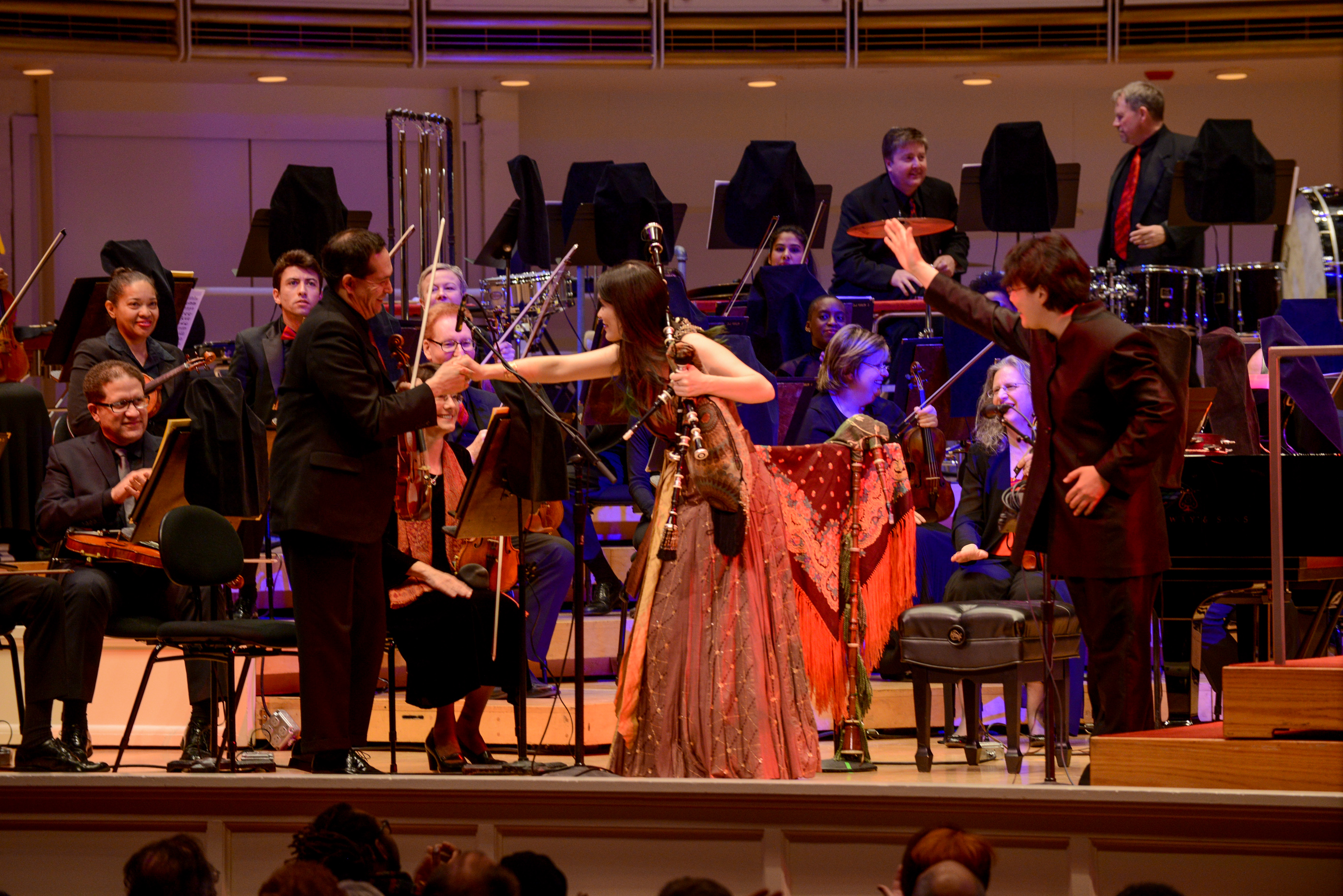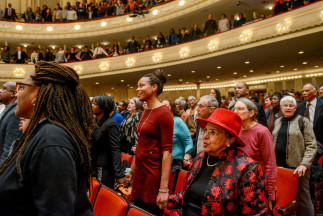The Sinfonietta
"Sinfonietta" is the Italian word for little symphony (orchestra). Orchestras range in size from full-size, amounting to at least 90 musicians who play large spaces, as in concert halls; to chamber, amounting to 50 or fewer musicians who play in smaller spaces, such as halls; parlors; and chambers. Chicago Sinfonietta lies between these numbers, with an average of 75 musicians playing at a given time.
...does it matter?
The size of an orchestra does indeed matter as this affects the type of music the musicians can play. Full-sized and mid-sized orchestras have the ability to play symphonic works, like Stravinsky's Firebird Suite. While chamber orchestras are well-suited for works by Haydn and the like, such as Symphony No. 88 in G.
The Conductor
The conductor, or maestra/o, has a long list of responsibilities besides beating time, or rhythm. He or she stands at the podium in front of the orchestra, and ensures that the musicians convey and express what is on the page with emotion and musicality. The conductor is in charge of keeping the music in balance by making sure that each respective section doesn't drown out any of the others. The orchestra must blend, with each instrument getting equal representation. The conductor must also keep the tempo, or speed of the music consistent to ensure that the music does not rush or drag. He or she cues the correct entries of the ensemble. The role of conductor is quite the juggling act and requires constant focus; but Maestra Mei-Ann Chen makes it look easy!
The Concertmaster
The concertmaster is the principal violinist. As the violinist with the highest “rank,” he or she sits in the first chair, next to the conductor’s podium. The concertmaster leads the orchestra in its tuning prior to the concert, and generally plays all of the violin solos within pieces. In addition, the concertmaster marks the orchestra’s scores with the appropriate bowings—to ensure that all the violinists are moving and playing in unison.
The Composer
The composer is essential to the performance, they create the music that we perform for your enjoyment! The music created varies depending on the era, from Classical to Modern, and may feature music elements that are indicative of a particular culture. This cultural borrowing can be heard in Dvořák's New World Symphony, which showcases influences by Native American music and African American spirituals. Chicago Sinfonietta leads American orchestras in presenting works by diverse and underrepresented composers. This mission to perform and commission works by composers of color and female composers, who too often receive little to no attention, has been ingrained in Chicago Sinfonietta's mission of championing diversity in American orchestras.
You
You are why we do this! Our audience members play a key role as you each inform our successes through your participation, reaction, and experience. At any given time, the audience may consist of well-versed listeners and musicians to newcomers oforchestral performances. Chicago Sinfonietta welcomes individuals of all backgrounds to witness our innovative, musically-expressive, and visually-stimulating concerts, participate in our interactive engagements, and embrace our mission to change the face of classical music through musical excellence and diversity.





